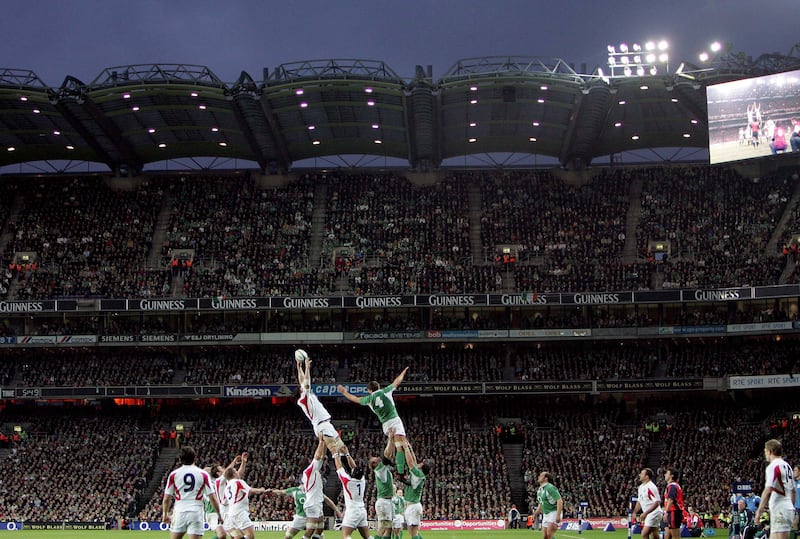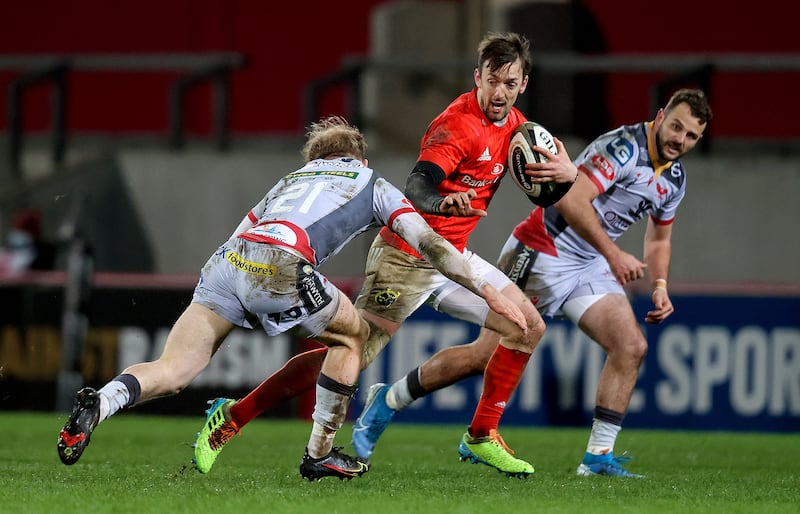Two years ago, to mark the 15th anniversary of the decision to open Croke Park for rugby and soccer, The Sunday Game excavated some footage from the barbed, tired, entrenched debate at GAA Congress.
As 26 speakers ploughed over harrowed ground, Cork were among the leaders of the opposition, circumventing the expressed wishes of their own clubs with a procedural shimmy.
Bob Honohan, a veteran of the Cork board, appeared in The Sunday Game archive piece, expressing a view that was common on his side of the fence.
“Would it make any sense,” he asked, rhetorically, “for me to allow my competitors the use of my showrooms to display their goods?”
READ MORE
The familiar premise of the argument was that the GAA was locked in a recruitment war with two heavily resourced professional sports, already glamorised by their global profile and glossy TV presence.
For an organisation with such reserves of cultural capital, and greater island-wide penetration than any mobile phone network, it was a depressingly defensive position. As you know, it didn’t prevail.
On Thursday night rugby will make its debut in Páirc Uí Chaoimh when Munster take on a South Africa XV, in front of a sell-out attendance of 41,400, the biggest ever crowd for a rugby game in the province, and greater than any crowd yet for a GAA match in the redeveloped stadium.
As the executive of the Cork County Board hunkered down in the trenches 17 years ago, such an event was unimaginable; it would never have entered their heads either during the long rebuilding project, when they insisted the stadium would be completed without any overhanging debt. You will be aware, too, how that panned out.
So, Munster Rugby, the South African Rugby Union and the Cork County Board, have come up with an attractive piece of live, midweek entertainment that poses no threat to the well-established identities of all parties.
At least two of the signatories to the arrangement desperately need the money, and in common with new stadia all over the world, Páirc Uí Chaoimh needs to be nimble and imaginative in its business dealings.
The rump of Rule 42 loyalists will condemn the affair as an act of gross commercial expediency and cultural vandalism, none of which can be taken to the bank. Anyway, that argument was lost.
The bigger picture is more interesting. The fear that opening up Croke Park to rugby and soccer would accelerate the defection of GAA players to those sports was a straw man in the Rule 42 debate, but, in general terms, the threat of rugby had been floating around the GAA’s consciousness since the turn of the century, when the Heineken Cup really took off and Irish rugby experienced its first boom.
Among elite Gaelic footballers, in particular, the physical aptitude for rugby was obvious. If they were young, and willing, and spotted, would their heads be turned?

Looking back now, the floodgates never opened. How many promising GAA players have Cork lost to rugby, for example?
Young Patrick Campbell, who might start for Munster on Thursday night, won a minor football All-Ireland with Cork in 2019, but he wasn’t tagged as a senior star of the future.
Tomás O’Leary captained Cork to win a minor hurling All-Ireland more than 20 years ago, and Darren Sweetnam was a brilliant teenager on a Cork hurling team mauled by Kilkenny in a league final a decade later. Of those three, Sweetnam was the one that Cork desperately didn’t want to lose. At elite level, though, the rate of attrition has been tiny.
What it also reflected was how the landscape of Irish sport had changed. The generation of kids who have grown up playing sport in Ireland since the turn of the century would have no allegiance to the kind of narrow-minded, cultural separatism that peppered so much of the Rule 42 debate.
Instead, they expect to have opportunities to play whatever they like. In rural Ireland, especially, that is a comparatively new phenomenon.
In the 1970s and 1980s it was possible to find provincial towns where rugby had no presence, and easy to find villages that didn’t have a soccer team. The major sports had distinct congregations and ecumenism wasn’t necessarily encouraged. To a large extent, those divisions have fallen.

So, somebody like Robbie Henshaw played minor football for Westmeath for two years while also playing schools rugby for Ireland; Jack Carty played U-15 soccer for Ireland and minor football for Roscommon before committing to a rugby career with Connacht. Dessie Hutchinson pursued a professional soccer career with Brighton in England before returning home to be a hurling star.
When Leinster Rugby actively went in search of players outside Dublin – and its age-old feeder schools – players with a GAA background were bound to come up in their dragnets.
Adam Byrne, for example, played football for Kildare as a teenager; Conor O’Brien played for Westmeath; Michael Milne hurled for Offaly. Those kids, though, had been exposed to a variety of sports and their minds were open.
Talented young Irish athletes now expect to have choices. Conor Nash was a brilliant minor footballer with Meath, but when he accepted an offer from Hawthorn in Australian Rules, the other professional offer on the table was from the Leinster Academy; during the summer he signed a two-year contract extension to stay in Australia.
Much more than rugby, the AFL has been a destination for talented young Gaelic footballers for decades, benefitting from a relationship that the GAA has actively cultivated. Australian Rules was characterised as a distant relative rather than a threat. That’s another story.
Thursday night’s game reflects the sporting world we live in now: you can be mad about Cork and passionate about Munster and have a weakness for Liverpool, and maybe once in a while, turn up in Páirc Uí Chaoimh on a winter’s evening to watch rugby. What took us so long?
















